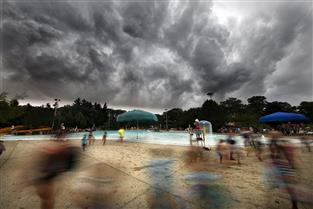A new grading system in the Wauwatosa School District has eliminated traditional percentile and letter grades for middle and high school students and instead evaluates learning based on a 4-3-2-1 rubric scale.
While this formula, known as Grading for Learning, has been studied and practiced for a couple years by district teachers and volunteers, it is finally in full effect in all Wauwatosa middle and high schools for 2014-15.
About 60 secondary teachers piloted Grading for Learning with students in their classes last year, while 50 volunteer teachers researched its principles.
The four-point scale seeks to unify how teachers grade, emphasize teacher feedback and encourage students to synthesize, summarize and interpret learned material, rather than memorize and "regurgitate" it back on a test.
It also does away with extra credit and zeros in the grade book, based on research by Thomas Guskey that shows how the two elements skew grades or do not relate to course material. Guskey spoke to Wauwatosa teachers in 2011.
"This movement started when we looked at the power of 'zero' mathematically," said Nick Hughes, principal of Wauwatosa East High School. "Averaging has not always been the best methodology."
Sun Prairie and Kettle Moraine school districts grade with the four-point scale. College professors that have worked with the Wauwatosa School District said they relate to the four-point method of grading because it prepares students for the rigor of higher education, said Dave Dentinger, supervisor of secondary education.
Fully implementing the four-point scale is the final step in Wauwatosa's new grading system, which has developed slowly for the past three to four years.
The goal now is to continue to refine and clarify the system, said Dentinger.
The teachers will still give students grades. The four-point scale numbers are converted to grades and the schools will still use the same calculations for grade point averages. Parents and students will still get an overall letter grade as in the past.
To create uniformity, teachers now grade a student 1 through 4, where 1 describes a student who inconsistently demonstrates partial mastery; 2 describes a student with partial mastery; 3 is a student who consistently demonstrates adequate mastery in familiar contexts; and 4 is given to students who consistently demonstrate thorough mastery of content in new or extended contexts, based on benchmarks.
Benchmarks are the essential skills and concepts that students need to learn to master in a course or at a certain grade level. Benchmarks are agreed upon by teachers and administrators for each class subject and grade level before the school year begins.
Secondary benchmarks can be found online on the school district's website, www.wauwatosa.k12.wi.us, in the "For Parents" section, under "Grading for Learning." There are four or five benchmarks per class. For English Language Arts, the benchmarks are: read, write, research, language and oral. All have a written description of what constitutes proficiency in those five areas.
When a student is graded on an English essay, for example, the teacher will grade the student 1 to 4 in each benchmark category that applies to the assignment. This method of grading will apply to every assignment. Over time, students will see a pattern if they are consistently earning proficient scores in one benchmark category, or falling short in another.
Benchmarks also create consistency for how teachers measure student achievement. With a common rubric, grades are more equitable across different schools and different teachers.
"(Teachers and students) both feel the changes to grading," said Frank Calarco, principal of Wauwatosa West. "The challenge is getting (students) to understand what (the rubric) is saying to them."
Not every homework assignment counts toward a student's final grade, but all work is graded. Some assignments are called "formative" assignments. Assessments or assignments that count toward the final grade are called "summative" work.
Despite misconceptions, the four-point scale is not eliminating homework. It is challenging students to complete homework for practice and learning, rather than for a grade.
Former grading methods might have weighted homework as 20 percent of a student's final grade. This not only increased grade inflation but didn't necessarily reflect whether a student knew the material.
"It's just getting students accustomed to learning and what their achievement is," said Calarco.
Misconceptions
Since the beginning of the school year, teachers and administrators have had to answer many questions from inquiring parents and students.
"(Grading for Learning) is so different from how (parents) were graded growing up. We knew how to play the grading game," said Hughes, of parental concern. "The fear is not experiencing it for themselves. As a teacher, I scored work how I was graded."
Transparency has been key to explaining the new system, said Hughes. The websites page dedicated to Grading for Learning may be useful in understanding the system.
"We're not trying to do anything that is detrimental to students," said Beth Erenberger, director of teaching and learning. "We would not be interested in this if we thought this would be a disadvantage to the students."
More from News and Features
- Anodyne Coffee plans to open location in Wauwatosa Village
- Wauwatosa Meetings: Aug. 4
- Video: Wauwatosa girl's curbside ice cream stand raises money for the hungry
- Wauwatosa News and Notes: Hands-only CPR training offered; Firefly Art Fair is Aug. 6-7
- Wauwatosa Ask Now: Why are there barriers and fencing along the North Avenue bridges over the Menomonee River?
- Mystery Photo Contest: July 28
- Wauwatosa gears up for National Night Out event, this year at the zoo
- Election 2016: Wisconsin's 4th District candidates weigh in
- Wauwatosa's Luther Manor residents share smiles through flower delivery
- Wauwatosa Police Report: July 17-23














